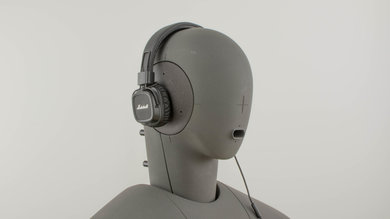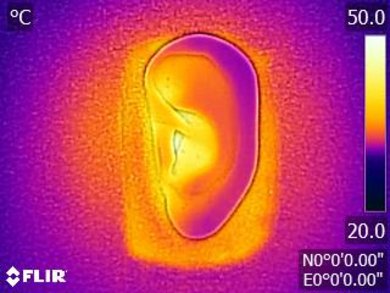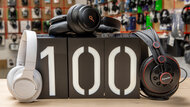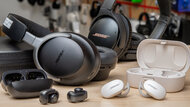Our Verdict
The Major II are not the most versatile headphones. They have a simple, lightweight design that's decent for critical listening and studio recording. However, they don't isolate enough for loud environments and their build quality feels a little cheap.
- Lightweight, and stable design.
- Low leakage.
- Poor noise isolation.
- Slightly tight on the head.
- Fragile build quality.
Decent for neutral listening. They do a good job reproducing the bass and mid-range but struggle a bit with the higher frequencies. They should sound good enough for most casual listeners. However, their lack of a decent soundstage and poor treble range is not ideal for a pure neutral listening experience.
Mediocre-at-best for commuting. They do not provide enough isolation for loud environments like being on a bus or a plane. On the upside, they are decently compact to carry around.
Average for sports use. They're lightweight and moderately stable enough on the head to not easily fall during exercise. However, they're not made for sports and their control scheme is mediocre-at-best, forcing you to adjust the volume or change tracks directly on your mobile device.
Mediocre for office use. Although they don't leak much, except at high volumes, their poor isolation will not prevent the noise of a lively office from seeping into your audio.
Average for gaming. They have a wired connection, so they have negligible latency which is suitable for gaming. They also have a decent microphone that's compatible with some consoles. Unfortunately, they lack a good app to customize their sound profile like most gaming headsets, and they're also a bit tight on the head to wear for really long gaming sessions.
Changelog
- Updated Nov 21, 2019: Converted to Test Bench 1.3.1.
- Updated Nov 21, 2019: Converted to Test Bench 1.3.
- Updated Feb 16, 2018: Converted to Test Bench 1.2.
- Updated Oct 02, 2017: The microphone has been tested with our new methodology, as explained here
Check Price
Popular Headphones Comparisons
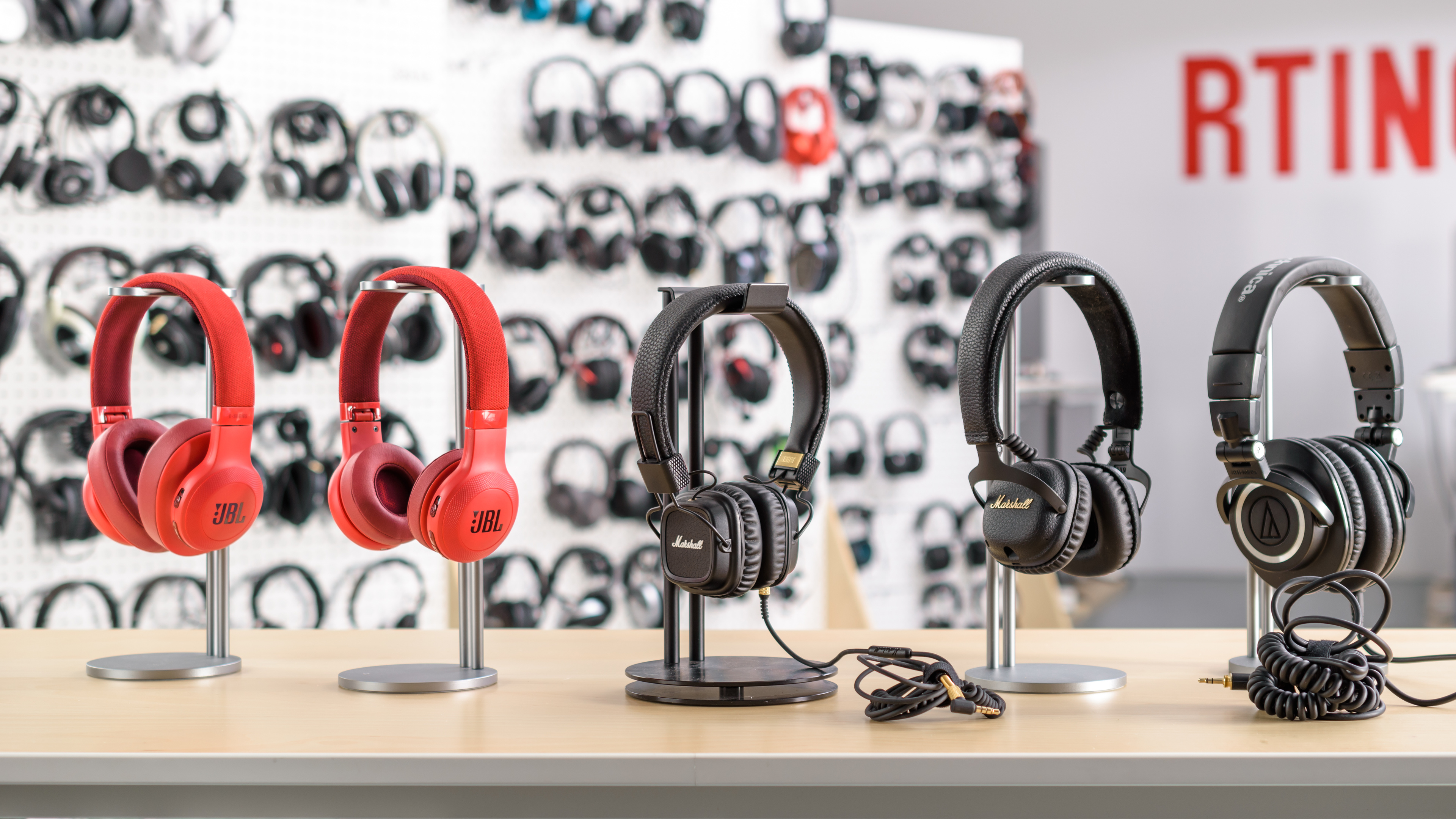
The Marshall Major II are an above-average-sounding, mid-range on-ear. They're a bit plasticky and don't have the sturdiest build quality but they deliver a decently well balanced audio reproduction, they're compact, lightweight and don't leak much. However, they may feel a bit tight on your head out-of-the-box, and they don't block a lot of noise, so they won't be the best headphones for commuting. They're also slightly lacking in features especially when compared to some of the competing models below. See our recommendations for the best noise canceling headphones, the best noise cancelling headphones under $200 and the best on-ear headphones.
If you want the convenience of a wireless and wired design, go for the Marshall MID ANC Wireless. However, if you only need a wired headset at a budget price, go for the Marshall Major II. The MID ANC are wireless and also noise cancelling, which makes them a more versatile everyday option. They also have a better-balanced sound quality and come with a cable, meaning that you can use them passively if the battery dies. The Major II are completely passive, so you do not have to worry about a battery in the first place. They also have a slightly more compact design but don't look or feel as premium as the MID ANC.
If you prefer the compact design of in-ears, then go for the Jaybird X3; however, if you're not a big fan of the in-ear fit and also do not need a wireless design, then go for the Marshall Major II instead. The X3 are wireless and compact enough to fit into your pockets, which makes them a bit more practical for most listeners than the Major II. They also provide better isolation against ambient noise thanks to their in-ear fit and low leakage (so you can play your music at higher volumes and not distract the people around you). They're also a much better choice for sports than the Marshall. On the other hand, the Major II are completely passive, so you do not have to worry about battery life, latency, or wireless reliability. They also have an on-ear fit that some may prefer over in-ear designs like the Jaybirds.
If you just need budget wired headphones then the Marshall Major 2/Major II could be a viable option but in most cases, the wireless noise-canceling Bose QuietComfort 35 II/QC35 II Wireless 2018 are a much better and more versatile pair of headphones. The Bose block a lot of noise with their noise cancelling feature which makes them more suitable for commute and travel. They're also a lot more comfortable and have an over-ear fit that most will prefer over the on-ear design of the Marshall. The Marshall, on the other hand, are completely passive, so you don't need to worry about battery life. They're also a bit more compact to carry around than the Bose but don't come with a case like the Bose do.
The Audio-Technica ATH-M60x are better headphones than the Marshall Major 2/Major II. The Audio-Technica have a better-balanced sound quality than the Marshall. They're also better built and look more premium and durable than the Marshall, and come with three sturdy and durable audio cables. On the upside, the Marshall have a limited in-line remote that gives you some control over your audio. They're also a lot more compact to carry around, being lighter, smaller, and more foldable than the Audio-Technica.
Test Results
The Marshall Major II have a sleek studio design that looks pretty good. They come in a simple all-black color scheme with a relatively wide headband and square ear cups that have a textured finish. The design is reminiscent of Marshall-made amplifiers and instrument accessories, which feels unique yet understated enough to work for most listeners. Sadly, the plastic used in the build quality feels a bit cheap upon closer inspection.
The Marshall Major II have a lightweight on-ear build and are sufficiently well padded, to deliver a decently comfortable listening experience. Unfortunately, they're a bit tight on the head. That combined with the small, square ear cups puts a lot of pressure on the ears that can become a bit uncomfortable when listening for long periods of time.
The button layout for these headphones is mediocre-at-best. All they provide on the inline controls is a call/music button. This means you will have to adjust the volume or skip tracks directly on your audio device, which can get a bit tedious when on the go.
The Marshall Major II are decently breathable on-ear headphones. They do not fully cover your ears and therefore do not obstruct as much airflow as some of the closed-back over-ear models we've tested. They will not make you sweat more than average during casual listening sessions but won't be as good as in-ears when working out and exercising.
The Marshall Major II are fairly portable headphones. They're a bit on the larger side for an on-ear model but they will easily fit into a bag or even some bigger jacket pockets. The foldable design saves a decent amount of space but they may still be a bit bothersome to carry on your person and do not come with a case.
The build quality of the Major II looks sturdy at a glance but actually feels fragile and plasticky. They won't get damaged easily from a few drops thanks to their simple, lightweight design that doesn't have too many moving parts. However, the mostly plastic build does not feel very durable and the headband, especially, is a bit weak and may warp under heavy physical stress.
The tight fit makes them above-average stable. They don't move much once on your head, which makes them decent headphones to jog with. However, they're not specifically designed for sports or physical activity, so under intense exercise, they may slip off your ears. On the upside, the cable will detach if hooked by something.
The frequency response consistency is great. In the bass range, there is very little variance across our five human subjects, even for our human subject who wears glasses. In the treble range, below 10KHz, the maximum deviation is less than 4dB, which is also good. Therefore, the Major 2 will have a consistent bass and treble delivery across multiple users and re-seats.
The Marshall Major 2 have a great bass response. LFE (low-frequency extension) is at 10Hz, which is excellent. Low-bass, responsible for the thump and rumble common to bass-heavy music and sound effects, is hyped by 2dB. Mid-bass, responsible for the body of bass guitars and the punch of kick drums is over our neutral target by less than 2dB. High-bass, responsible for warmth, is also overemphasized by less than 2dB. Overall, the bass is deep, punchy and strong, without sounding boomy.
The mid-range is good. The overall response is quite even, but with a 5dB bump centered around 500Hz. This makes the mid-range of these headphones a bit boxy and forward, by bringing the vocals and lead instruments to the front of the mix.
The Marshall Major 2 have an average-at-best treble range performance. Low-treble is underemphasized by about 4dB, negatively affecting the detail and brightness of vocals and lead instruments. Mid-treble is rather uneven, resulting in an inconsistent reproduction of sibilances (S and T sounds). This will be mostly noticeable on vocals and cymbals.
The Marshall Major 2 has a very good imaging performance. Their weighted group delay is at 0.2, which is quite good. The GD graph also shows that their group delay never crosses the audibility threshold. This indicates a tight bass and a transparent treble reproduction. In terms of driver matching, the L/R drivers of our test unit were very well-matched in amplitude, phase, and frequency response, ensuring accurate placement and localization of objects (voices, instruments, and video game effects) in the stereo image.
The soundstage is poor. Due to their on-ear and closed-back design, the Marshalls don't interact with the pinna much and therefore, don't activate its resonances. This corresponds to the low PRTF size and high PRTF error values. Overall, the soundstage of the Major 2 will be perceived as small and located inside the listener's head.
The isolation performance is mediocre. These on-ear headphones don't have ANC (active noise cancellation) and therefore don't isolate in the bass range. This means they will let in all low rumbling noises like the sound of airplane and bus engines. In the mid-range, important for blocking out speech, they achieve about 10dB of isolation which is average. In the treble range, occupied by sharp sounds like S and Ts, they reduce outside noise by more than 33dB, which is good.
The leakage performance of the Major II is above-average. The significant portion of their leakage is spread across the mid and treble ranges, which is a relatively broad range. This makes leakage fuller sounding than that of in-ears and earbuds. However, the overall level of the leakage is low. With the music at 100dB SPL, the leakage at 1 foot away averages at 38dB SPL and peaks at 48dB SPL which is just below the noise floor of an average office.
The in-line microphone of the Marshall Major II is decent. In quiet environments, speech recorded or transmitted with this mic sound a bit thin, but clear, detailed, and intelligible. In noisy situations, however, it may struggle to fully separate speech from ambient noise even in moderately loud places, like a busy street.
The microphone has a good recording quality. The dips in the bass range results in a recorded/transmitted speech that sound a bit thin. The bump around 20Hz though could make this mic prone to pops and low rumbling noises. The HFE (high-frequency extension) is at 10KHz, suggesting a speech that is detailed and clear. However, it may lack some brilliance and airiness due to the dip above 10KHz. The response in the mid and treble ranges is quite even and flat, resulting in a natural and intelligible speech.
The noise handling of the Major II's mic is mediocre. In our SpNR test, this microphone achieved a speech-to-noise ratio of 16dB. This indicates it is best suited for quiet environments since it may struggle to fully separate speech from ambient noise even in moderately loud situations.
These are passive headphones with no active components and no battery.
The Major II do not have a dedicated, compatible app for added customization.
These headphones are wired and do not have a Bluetooth connection. If you want a similar design from Marshall that has a wireless Bluetooth connection, then consider the Marshall MID ANC instead.
They have negligible latency because they have a wired connection.
The Marshall Major II have a 1/8TRRS audio cable with an inline remote microphone that is compatible with the PS4 and Xbox One controller. They should also have mic support for PC and tablet if you have a 4-pin headphone jack or a headset adapter.
The Marshall Major II do not have a dock. If you need a headset with a dock that also has a wired connection for gaming or watching movies, then consider the SteelSeries Arctis 7.

